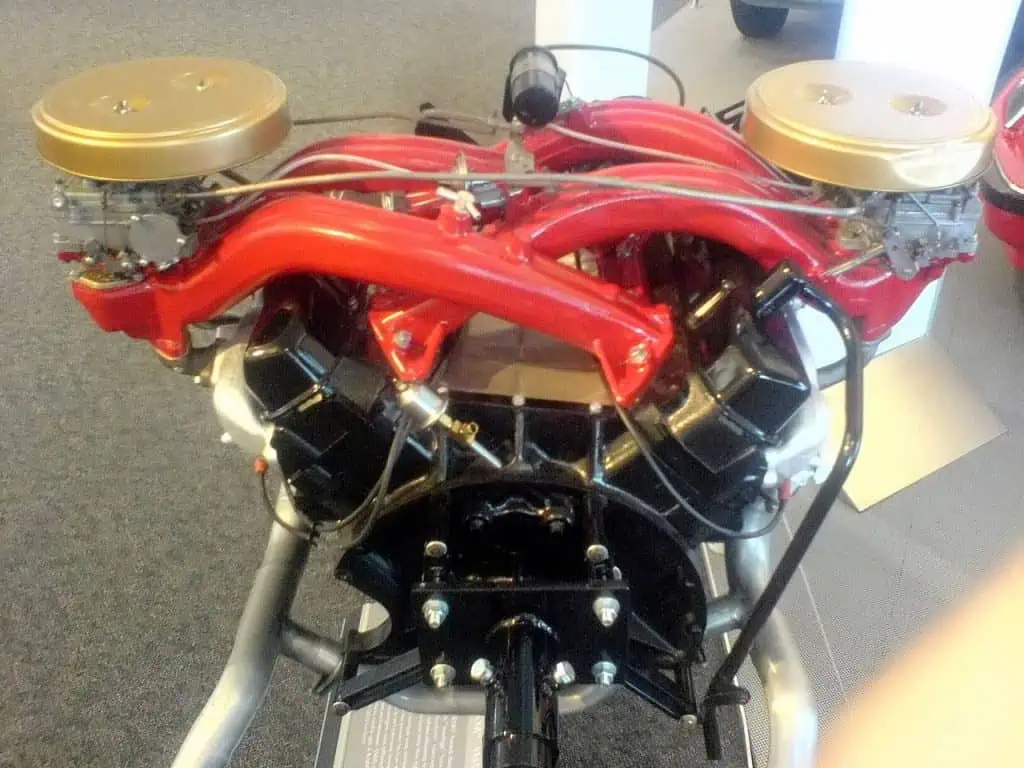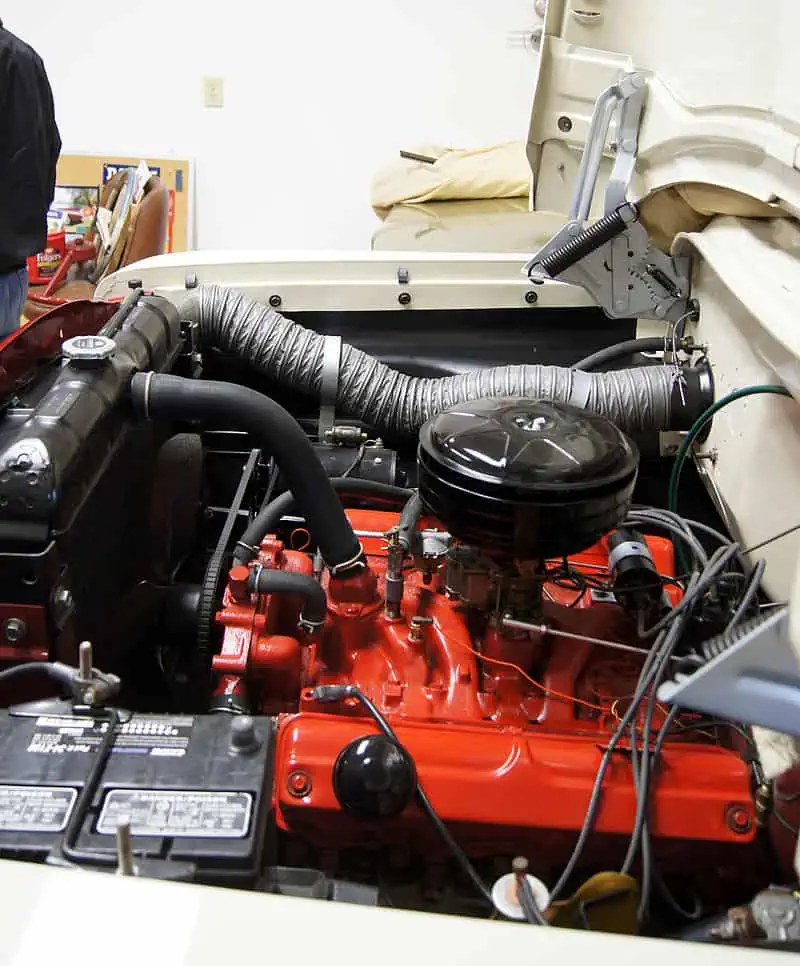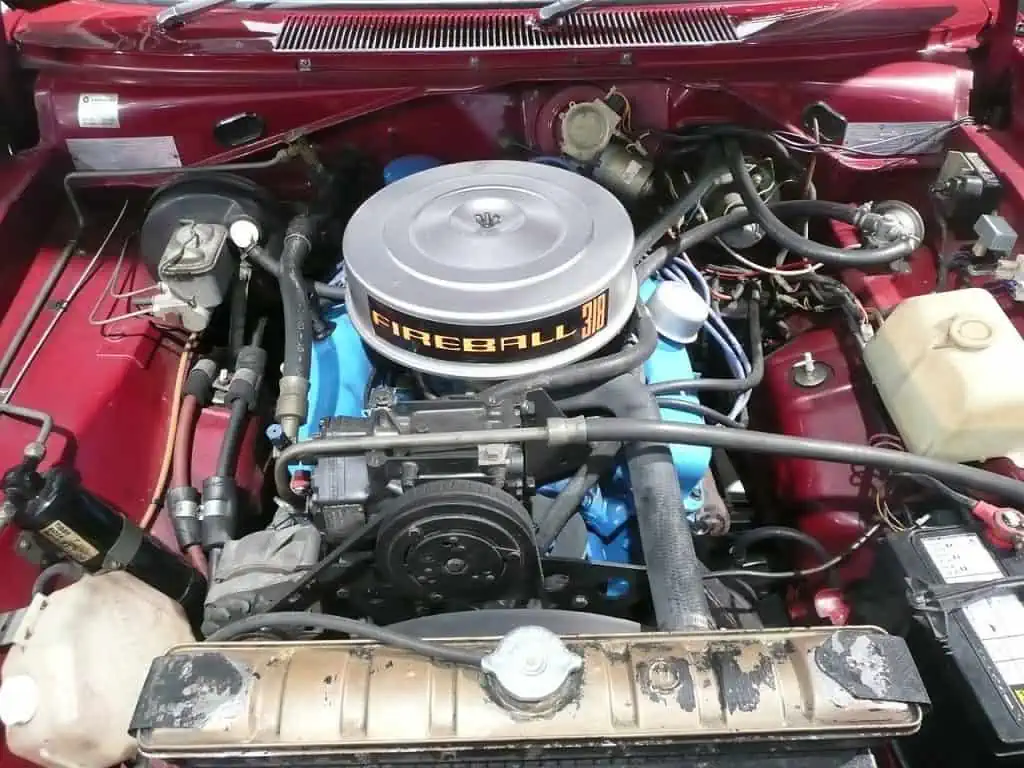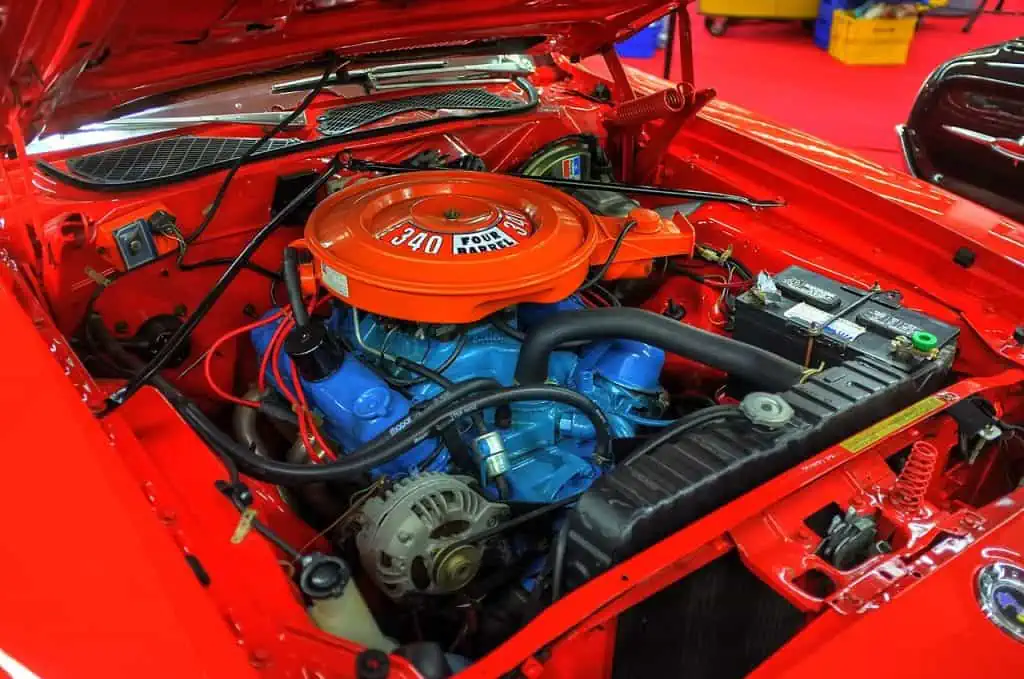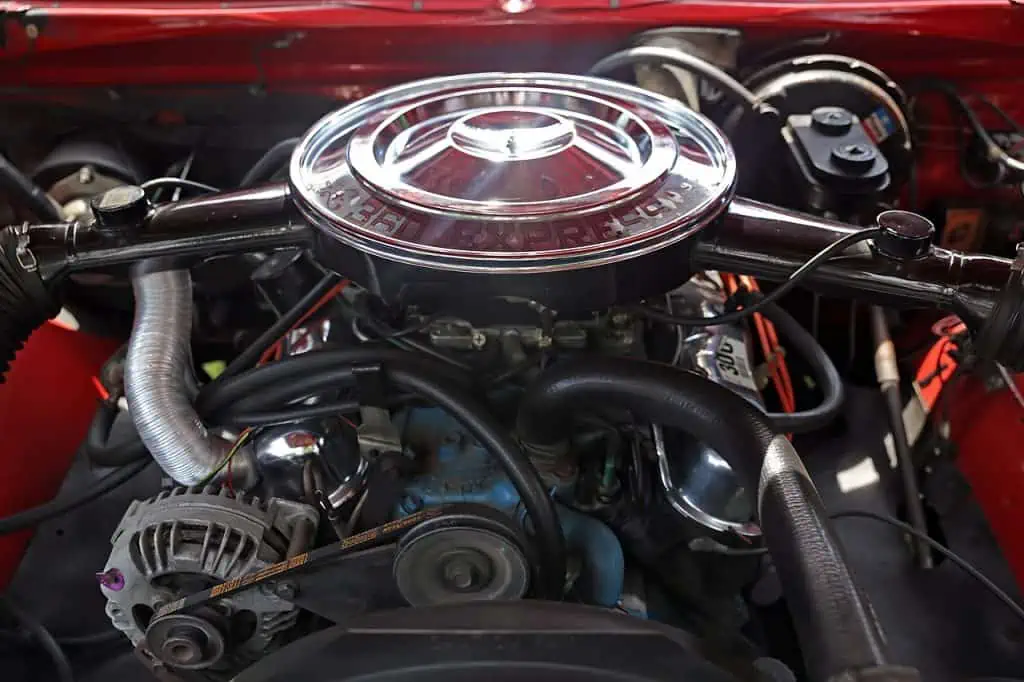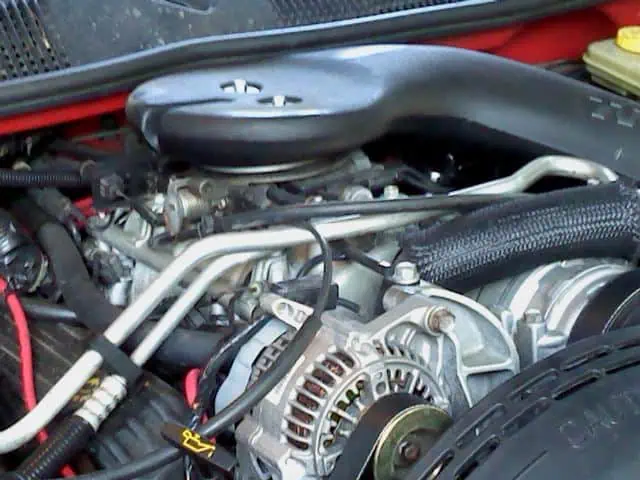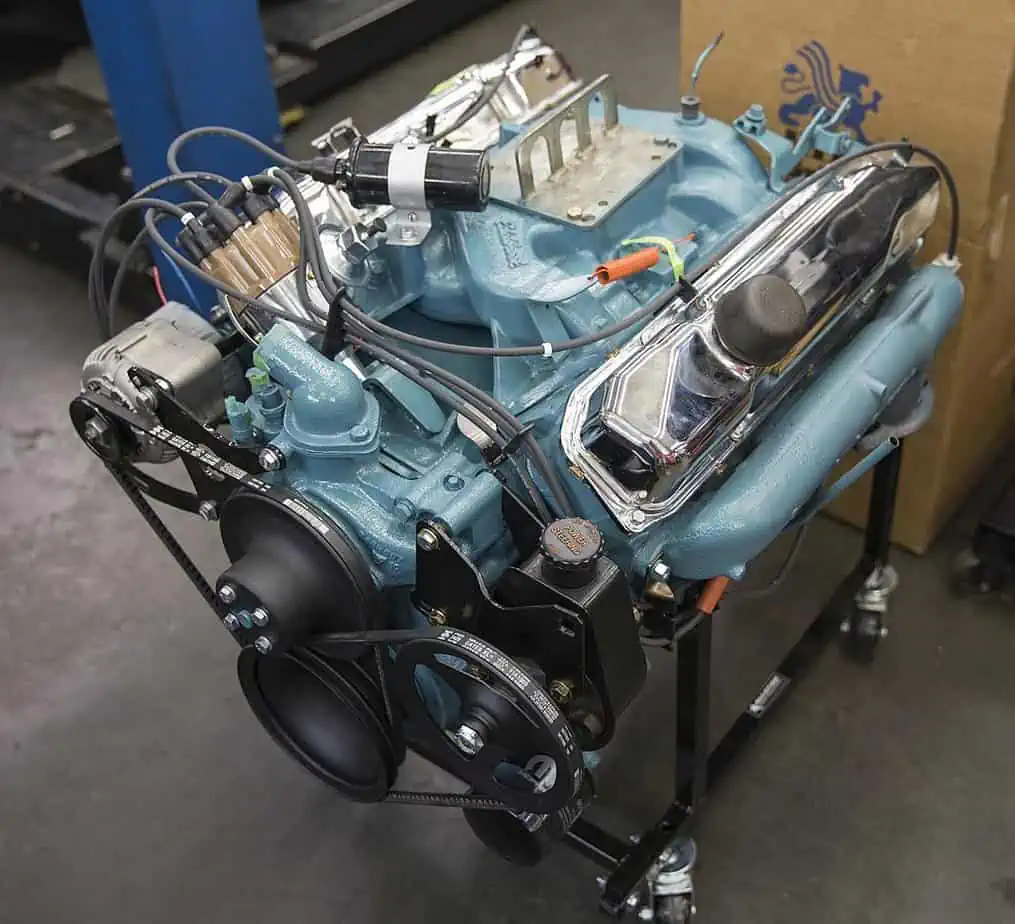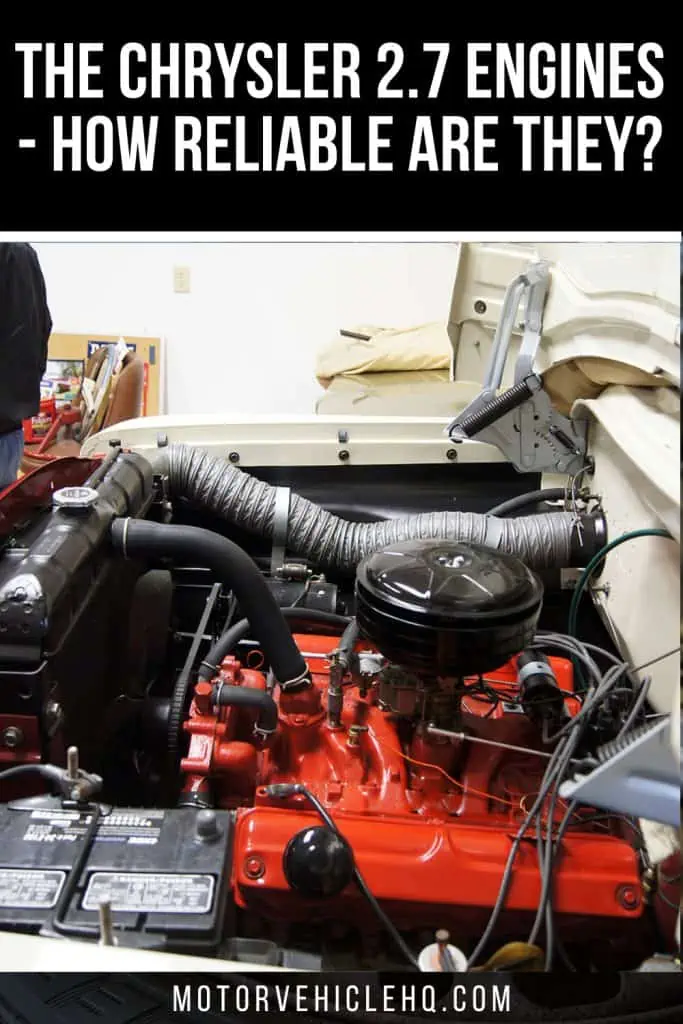Are you searching for these particular Chrysler 2.7 engines because you intend to buy a vintage Dodge or Chrysler product? In that case, you’ve come to the perfect spot since we’ll go over everything there is to know about 2.7 engines.
One of the best things you can do is to perform adequate study before going out and purchasing a vehicle. And I’ll tell you, every car has issues. While some of them have more, others have to a lesser degree. And the ones who are less likely to encounter issues should be your target.
The engines and the transmissions are the most crucial factors that you must take into account. Because the engine is what moves your automobile ahead on the road, the engines are quite important to you as a potential owner.
If the engine is damaged, the automobile will spend more time in the shop than it will on the road. And that’s not ideal for you since you don’t want to have a hole in your pocket. Because of this, we are here to assist you with your problems and instruct you on everything there is to know about Chrysler 2.7 engines.
We will first become familiar with the fundamentals and specifications of this engine. Later, we’ll talk about this engine’s uses and examine the general cars that this engine is used. Later, we’ll talk about the issues with this engine and its general dependability. So, read on to the end if you want to discover more.
The Chrysler 2.7 Engines: What are They?
So, what exactly is the Chrysler 2.7 engine? We must familiarize ourselves with and grasp the fundamentals of Chrysler 2.7 engines before moving on to more complicated topics.
In the 1990s, Chrysler created the Chrysler 2.7 engine, which debuted in 1998. Since the engine was introduced the same year Daimler acquired the Chrysler Corporation during the pre-Daimler era, it can be said to be a genuine Chrysler product.
Although this engine was based on the larger 3.5L Chrysler engine, the bore and stroke were different. Given that the engine has a reduced displacement, this makes sense. It’s crucial to remember that the 3.5L V6 served as the inspiration for the majority of the design.
A Chrysler engine by Dyno Tested. Many things that these Chrysler 2.7 engines shouldn’t have been used in were, especially in vehicles built on the LX platform. The LX vehicles’ platforms were much larger than those of the LH cars. The performance of the engine is primarily to blame.
Because it was designed to be fitted in automobiles with the LH platform, the 2.7L is also known as the LH engine. Later in the article, we’ll talk more about the applications.
The fact that this engine was primarily intended for front-wheel drive automobiles is crucial. Even if it was later modified for applications requiring rear-wheel drive, this is, in my opinion, where the engine fell short.
The employment of this engine in rear-wheel-drive automobiles was the primary cause of its issues. Given the applications in which it was installed, this engine is relatively tiny. However, we will talk more about the issues in a later section of the essay where we will go over them in greater detail.
First, we’ll learn about the specifications of this engine and its uses in the subsequent chapters. For those who are wanting to buy a Chrysler 2.7 engine, this is of utmost importance.
What are the Specifications of Chrysler 2.7 Engines?
We discovered that the Chrysler 2.7 engines were designed for the LH platform and debuted in 1998. Let’s now discuss the 2.7 engines’ specifications.
The 2.7 engine has an odd displacement configuration. Quite compact for a V6. The majority of V6 engines have displacements greater than 3.0L.
But it was a naturally aspirated engine, and the block was at a 60-degree angle. i.e., this application does not allow for turbocharging or supercharging.
The stroke was 3.09 inches long, while the cylinder bore was 3.9 inches. Short stroke length engine. Both the block and the head were constructed of aluminum. Adding to its lightness and making it a suitable use for lightweight autos.
9.7:1 was the compression ratio. Nothing noteworthy. Later, when this engine was installed in the larger LX platform automobiles, the compression ratio was increased. arriving at a compression ratio of 9.9:1. Major advancement.
Despite being a V6, the redline was just at 6,500 rpm. Four valves per cylinder were used in the dual overhead camshaft engine head. Additionally, sequential fuel injection was included.
This engine’s official horsepower ratings were 200 flat. Rated at 178hp despite some applications being weaker. This engine’s rated torque output was 190 lb-ft.
This engine was designed to be used as an everyday commuter engine and was not intended to be a performance motor. Additionally, based on the applications the Chrysler 2.7 engines are used in, you can draw a judgment about that.
We’ll talk specifically about that and discover more about the vehicles that used this engine in the chapter that follows. So, keep reading if you want to discover more.
Which are the Applications of the Chrysler 2.7 Engines?
Let’s check out the goods that the Chrysler 2.7 engines were used in. specifically, which Chrysler Corporation products. Because, as you are aware, Chrysler owns several brands, including Jeep and Dodge.
The Chrysler Concorde was the first automobile to feature the 2.7 engine. specifically in the Concorde’s second generation. This vehicle was a four-door sedan that was common at the time.
An engine made by Chrysler by Greg Gjerdingen / CC BY 2.0. The Chrysler Chrisler 2.7 engine was developed in the 1990s and made its debut in 1998. The engine can be considered a genuine Chrysler product because it was released the same year Daimler purchased the Chrysler Corporation in the pre-Daimler era.
With a pointed snout and clean lines, it adopted a traditional American style from the 1990s. Until 2003, when Chrysler discontinued the model and replaced it with the 300, the engine was utilized in this vehicle.
The Dodge Intrepid was another item that utilized the 2.7. Under the hood, this vehicle was identical to the Concorde. sporting a Dodge emblem, though.
The Chrysler Sebring, a 2-door coupe made by Chrysler, was another vehicle with a 2.7 engine. This engine was also used in the Dodge Stratus. The Sebring body was used by the 4-door Stratus car.
Let’s get to the intriguing part, which is the LX automobiles, right away. Compared to the LH, this platform was significantly larger. They were full-size automobiles. Chrysler, however, had also decided to put this engine in these vehicles.
The Chrysler 300 and Dodge Charger are these vehicles. They both debuted in 2005, featured a nostalgic aesthetic reminiscent of Chrysler’s glory days, and quickly gained popularity.
Unfortunately, this is also where a lot of the issues with the Chrysler 2.7 engines occurred. People bought these cars like crazy. However, more on that will be covered in the chapters that follow, when we’ll concentrate on the engine’s problems.
Which are the Common Problems with the Chrysler 2.7 Engines?
Let’s now concentrate on the issues with the Chrysler 2.7 engines. This is the most crucial information for you to understand to decide if this engine should be your next buy.
Long-term benefits come from being aware of these issues because you’ll know what might go wrong with the engine and whether you should avoid it if you feel the issues are too severe.
After discussing the issues, we’ll conclude and determine whether or not this engine is the best choice for you as a car owner.
1. The Chrysler 2.7 Engines Performance Issues
These Chrysler 2.7 engines were put to use in many items that they shouldn’t have been. specifically in automobiles using the LX platform.
The platform in the LX cars was significantly bigger than the one in the LH cars. The engine’s performance is mostly responsible for this.
Imagine installing a tiny 2.7L engine in a body that is far heavier than it was intended to be.
These engines have been under a lot of stress as a result, which has decreased their reliability even further. The Charger, Magnum, and Chrysler 300 are examples of LX vehicles with heavier bodies that caused the 2.7 to experience even worse problems.
The engine in these cars is just plain unhappy, and it’s very impossible to discover the 0 to 60 timings online.
This is the case because no one gave a damn, the 2.7-engined automobiles were slow as snails on the road, and acceleration was a major issue.
The engine has been under a lot of strain as a result of the hefty chassis and prolonged use, which has led to significant engine wear and tear.
The situation is analogous to being forced to carry a backpack full of bricks for 100,000 kilometers. It wasn’t the best experience, and it might have even cost you your life. These Chargers and 300s also did so. They were failing too soon and running into a lot of problems.
The Chrysler LA engine by OSX. Models of the Chrysler 2.7 engine have few problems, only one important problem. No little one. The problem is the buildup of oil sludge in this engine. It was planned for this problem to exist. i.e., the issue frequently arises on and affects most of these engines.
For these engines, replacing the engine was the only practical course of action. And a substitute for a more powerful engine that was bigger, such as the V6 Pentastar or the 5.7 HEMI. Let’s now talk about the issues with the Chrysler 2.7 engines.
2. Buildup of Oil Sludge On the Chrysler 2.7 Engines
There are not many issues with Chrysler 2.7 engine models. only one significant issue. not a small one.
This engine’s development of oil sludge is the issue. This issue was intended to exist. i.e., the problem affects most of these engines and frequently develops on them.
The majority of engines with this issue have inadequate maintenance habits. Consequently, they haven’t experienced many oil changes throughout their lifetime.
The way the engine is built permits the oil to gunk up and cause internal damage. You run the danger of causing engine damage to this engine every time you neglect an oil change, even for a short period (a few hundred miles).
The size of the oil pan was the primary factor. Instead of adding a 6-quart oil pan, Chrysler opted to add a 5-quart oil pan. This might have prevented the need for many engines. The 5 quarts of oil in the engine are just not enough to keep it running; it needs more oil to survive.
To be safe over time and avoid affecting the indicators of oil sludge, it is best to flush the oil preventative about every 4,000 miles. The next chapter, in which we go into more detail about this issue, will cover more of the symptoms of oil sludge in the Chrysler 2.7 engines.
It’s useful to know that you may easily remove sludge from the engine anytime it begins to accumulate. This cannot be avoided. But we’ll talk more about this later.
Oil Sludge Buildup Indicators
Thus, we discovered that the formation of oil sludge is a significant problem with Chrysler 2.7 engines. What symptoms are present, and how can you tell whether your engine contains oil sludge? You will encounter a few symptoms, which we shall go into great detail about in the paragraphs that follow.
Loss of oil pressure is the first symptom of oil sludge development. The engine won’t be able to run smoothly since there won’t be enough oil pressure buildup.
The second set of warning flags is the weak acceleration and low fuel economy. In the worst-case scenario, a lack of oil pressure and compression would force the engine to simply stall, making it difficult to restart. There are a few signs that appear frequently when an engine is dying.
When the rods first start to knock, there are more severe symptoms. This is probably the result of worn bearings, and it won’t be long before the engine completely fails, breaking down with oil puddles under the car.
And to be quite honest, you don’t want to find yourself in this predicament with these Chrysler 2.7 engines; instead, you want to get a solid and dependable engine.
If the issue is caught early enough, you may be able to avoid it by changing the rod bearings and making a few minor adjustments. However, if this issue is discovered after the engine has already begun to knock, there is no other option but to replace the engine. You might simply have to pay more than $3,000 for a new engine.
A Chrysler-manufactured engine by Triple-green / CC BY-SA 2.0. Another problem with Chrysler 2.7 engine models is the timing chain tensioner failing. This timing chain tensioner, as its name implies, keeps stress on the chain to avoid chain leaping and subsequent damage.
3. Failure of the Timing Chain Tensioner
Failure of the timing chain tensioner is an additional issue with Chrysler 2.7 engine models. As the name suggests, this timing chain tensioner maintains strain on the chain to prevent chain jumping and resulting damage.
Unfortunately, these tensioners can wear out and break since they are frequently made of cheap plastic. indicating that the chain becomes loosened as they break.
Therefore, if the timing chain is loose, it could easily jump and seriously harm the engine. In the best-case scenario, the collision of the pistons and valves will need the replacement of some valves.
Or, in the worst situation, to completely replace the engine. In instances like this, there is a great probability that the damage will only worsen and that the engine will finally lock up as a result.
Unfortunately, this engine is beyond repair, so you will need to replace it with a brand-new member of the Chrysler 2.7 engine family.
4. Leakages from the Water Pump Into the Crankcase
The water pump gasket issue is another frequent issue with Chrysler 2.7 engine models. These engines’ water pump gaskets frequently leak, which leads to the engine eventually mixing coolant and oil and producing sludge.
This will hasten the formation of oil sludge and ensure that the engine fails earlier than initially expected.
Therefore, whenever you have an engine like this, keep an eye on the oil’s quality and check to see that it is not diluted with coolant or has oil sludge inside the engine.
Any kind of muck will accelerate the engine’s deterioration, and eventually, it will begin to knock and stop working altogether. That concludes the discussion of the Chrysler 2.7 engine issues. Let’s find out more about their general dependability and whether they are a wise investment.
What Is the Overall Reliability Score for the Chrysler 2.7 Engines?
The Chrysler 2.7 engines’ overall dependability is extremely low. indicating that you shouldn’t pay them any attention.
You shouldn’t use this engine in the future because it has over 3,000 reported engine failures and who knows how many that weren’t.
These engines have an astounding failure rate, and it’s rare for any engine to experience as many problems due to anything as basic as a faulty water pump gasket, inadequate oil capacity, or improper use.
2.7 engines built after 2005 are marginally more dependable than this engine’s older variants. These models grew more dependable when some of these issues were fixed.
Later, a 3.6L V6 engine replaced this one. This engine should have been installed with the cars from the beginning because it is far more suited to the size of the LX cars and these vehicles. But should you buy the 2.7 Chrysler engines? Well, keep reading because that will be covered later.
What Right Things Did Chrysler Do with the Chrysler 2.7 Engines?
It was wise to put six cylinders into a V6 with a short displacement. Because of its smaller size and ability to fit nearer the firewall, it has a lower center of gravity. The block and cylinder heads were made of aluminum with dual overhead camshafts operated by a chain and a forged steel crankshaft.
Engines made by Chrysler by Mr.choppers / CC BY-SA 3.0. Another prevalent issue with Chrysler 2.7 engine types is the water pump gasket issue. The water pump gaskets on these engines regularly fail, causing the engine to eventually mix coolant and oil and produce sludge.
The 2.7-liter produced 200 horsepower at its peak, which is a fair amount. The Chrysler 2.7 had simplicity on its side, but regrettably, that was the extent of its advantages.
What Wrong Things Did Chrysler Do with the Chrysler 2.7 Engines?
To begin with, the 2.7 was underpowered for the automobiles it was put into. Dodge Chargers from 2006 weighed more than 3,800 pounds at their lightest. Even though Chrysler Sebrings from 2001, which could only weigh 3,100 pounds, performed marginally better, 200 horsepower was insufficient.
At 170, the Charger received even less. The drawbacks continue after that as well. It is well known that these engines fail far before 100,000 miles.
The Chrysler 2.7’s greatest issue was the accumulation of oil sludge. When the water pump gasket failed, coolant could leak out and contaminate the engine oil. It would continuously seep into the oil, turning it into sludge.
The only workaround for this was to regularly check the oil and replace it after a certain number of kilometers. Even without a refurbishment, the engine is pricey.
The Chrysler 2.7 Engines V6: How Were These Worst Engines Made?
According to MotorBiscuit, Chrysler equipped a modest displacement V6 with six cylinders. It had cylinder heads, an aluminum block, and 24 valves. Additionally, it had a forged steel crankshaft and two overhead camshafts that were driven by a chain.
Its center of gravity was lowered since it was now small enough to wedge close to the firewall. Although it lost power over the years, it had roughly 200 horsepower.
According to Marspeed, Chrysler produced this engine in 1998. The business believed it need a portable and effective engine. In 2004 Chrysler redesigned it to match the LX.
Between 1998 and 2009, it was installed in numerous Dodge and Chrysler vehicles. It had roughly 190 pounds of torque. Dodge Concorde was the first automobile to receive this engine.
The 300M, Stratus, Sebring, Magnum SE, and Avenger were more vehicles that utilized this engine. Some, such as the Journey and 300M, were exclusively offered outside of the US.
Even though someone was able to keep a 2002 Dodge Intrepid alive with it, Redditors claimed that this was the worst engine in their Dodge Chargers.
Class Action Lawsuits Relating to Chrysler 2.7 Engines V6
Numerous class action lawsuits involving the 2.7-liter engines used in various Chrysler and Dodge automobiles between 1998 and at least 2003 were ongoing against Chrysler a few years ago.
The 2.7 was said to be prone to oil sludge as a result of its flawed design, which might lead to the engine failing far sooner than it ought to or was anticipated, according to Chrysler claims.
A Chrysler engine on a Grand Cherokee by Wphansen / CC BY-SA 3.0. The general dependability of the Chrysler 2.7 engines is rather poor. They’re telling you not to pay any attention to them. This engine had over 3,000 recorded engine failures and who knows how many that weren’t, so you shouldn’t use it going forward.
The faulty 2.7-liter engine was the subject of complaints from Sebring and other Chrysler car owners. The engine was discovered to malfunction sometime between 50,000 and 60,000 miles. Sometimes the engine might stop working after 20,000 miles.
What Was Chrysler’s Approach to the Lawsuit Concerning Its Cars with the Chrysler 2.7 Engines?
According to reports, the DaimlerChrysler group recruited a third-party business to manage warranty claims for Chrysler 2.7 engines that were defective. It was commonly known that proprietors found it challenging to get paid and to be given credit for any form of payment.
According to additional sources, the owner of a Chrysler vehicle had to have retained records showing that the oil was changed every 3,000 miles and that the oil change was done by a licensed Chrysler or Dodge dealer to be eligible to receive compensation from the case.
According to Chrysler, it was your fault if you decided to replace the oil in your automobile. And if your car’s oil was changed by another mechanic, that mechanic was to blame.
Is It Safe to Buy the Chrysler 2.7 Engines?
So, should you buy a vehicle equipped with a Chrysler 2.7 engine? If you don’t want to be stranded with a slow vehicle that might break down at any time, the answer is no.
However, if you choose a vehicle from the earlier 1990s, such as the Stratus or even the Dodge Avenger, you won’t regret your choice because these vehicles have much lighter chassis and perform well with the 2.7.
You will only encounter issues if you wish to purchase an LX vehicle like the 300, Charger, or Magnum. The issues with the engine are of less significance because you won’t be able to pass a tractor on the road with that engine in that chassis.
It is hazardous for you as a driver to be unable to overtake. Your struggle to pass other vehicles will put your life at peril. Purchase a large engine, then. Additionally, we’ll discuss the alternatives to the Chrysler 2.7 engines in the following chapter.
Which are the Other Possible Options for the Chrysler 2.7 Engines?
Let’s now talk about the Chrysler 2.7 engine substitutes. You might want to look at vehicles with the 3.2L and 3.5L V6 engines if you have an older Chrysler or Dodge with this engine. Compared to the 2.7, these engines are a lot more dependable.
They don’t have the oil sludge accumulation issue, and you’ll be very content with them as your own. Additionally, these engines are simply bolt-on and do not require construction to be changed on the LH platform.
Your best chance if you’re searching for an LX automobile is to look for one with a 5.7L V8 HEMI engine. This engine fits this chassis well and is also incredibly dependable. You will like driving this car because it will not feel at all slow. That’s our opinion on the matter.
A typical Chrysler B engine by Mr.choppers / CC BY-SA 3.0. The lackluster acceleration and poor fuel economy of the Chrisler 2.7 engine are the second set of red flags. In the worst situation, insufficient oil pressure and compression would cause the engine to simply stall, making a restart challenging. When an engine is dying, there are a few symptoms that usually manifest. ct.
If You Notice the Problems with the Chrysler 2.7 Engines In Time, They Can Be Fixed!
The oil sludge issue must be identified quickly. The engine will seize up and stall if it isn’t stopped. Fortunately, a solution exists. A metal separation plate was utilized in the water pump gasket but failed to function as intended.
According to Allpar, Chrysler provided a standard gasket to address the problem. If you don’t notice it right away, you may need to rebuild or replace the item. Both options will set you back hundreds of dollars. It’s a lot to load onto a weak engine.
The Conclusion
We discovered a lot about the Chrysler 2.7 engines in this article. The purpose of this engine was first made clear to us. The specifications of this engine and the 2.7 applications were then discussed.
to be aware of the vehicles that have this engine. You may probably guess that this engine is used in older LH and LX platform cars and trucks from the late 1990s and early 2000s.
The 2.7L engine’s issues were then revealed to us. As a result of a faulty water pump gasket and issues with the timing chain tensioners, we discovered that this engine had significant problems with oil sludge, problems with the oil and coolant mixing, and problems with the timing chain tensioners.
Finally, we discovered the reliability of the Chrysler 2.7 engine and discovered whether or not it is a wise investment.
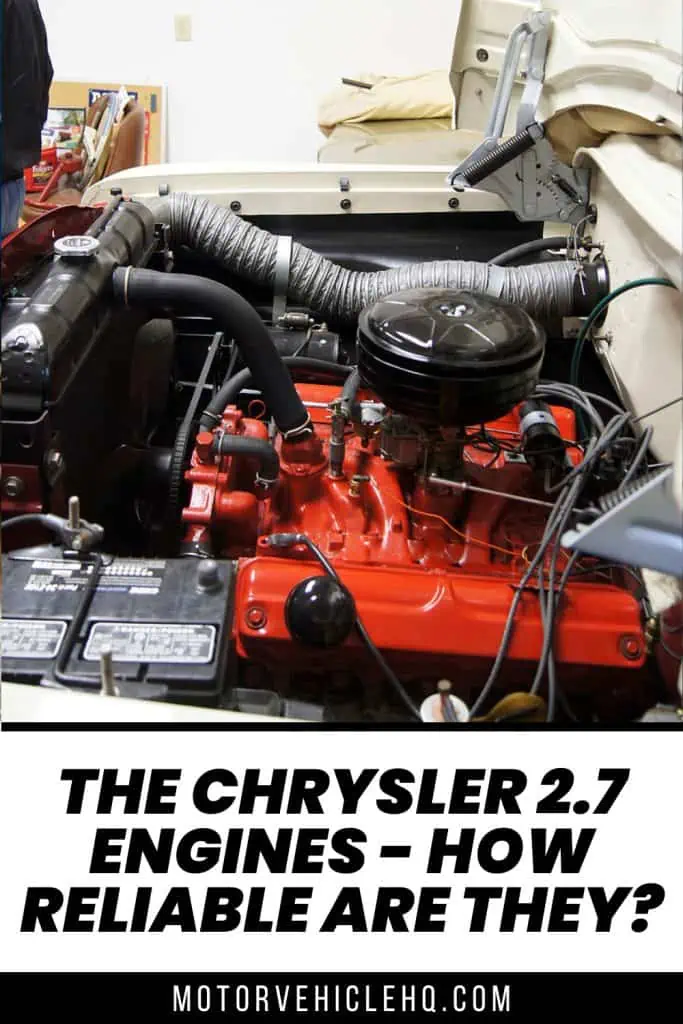
An engine made by Chrysler by Greg Gjerdingen / CC BY 2.0

Jim Wicks is the founder of MotorVehicleHQ. With over two decades of experience in the automotive industry and a degree in Automotive Technology, Jim is a certified car expert who has worked in various roles ranging from a mechanic, car dealership manager, to a racing car driver. He has owned more than 20 cars over the past 15 years. Ask him about any vehicle you see on the road and he can tell you the make, model and year. He loves the aesthetics of all things cars, and keeps his vehicles in pristine condition.
In his free time, Jim enjoys getting his hands dirty under the hood of a classic car or taking long drives along the country roads. His favorite car? A 1967 Shelby GT500, a true classic that, according to Jim, “represents the pure essence of American muscle.”
